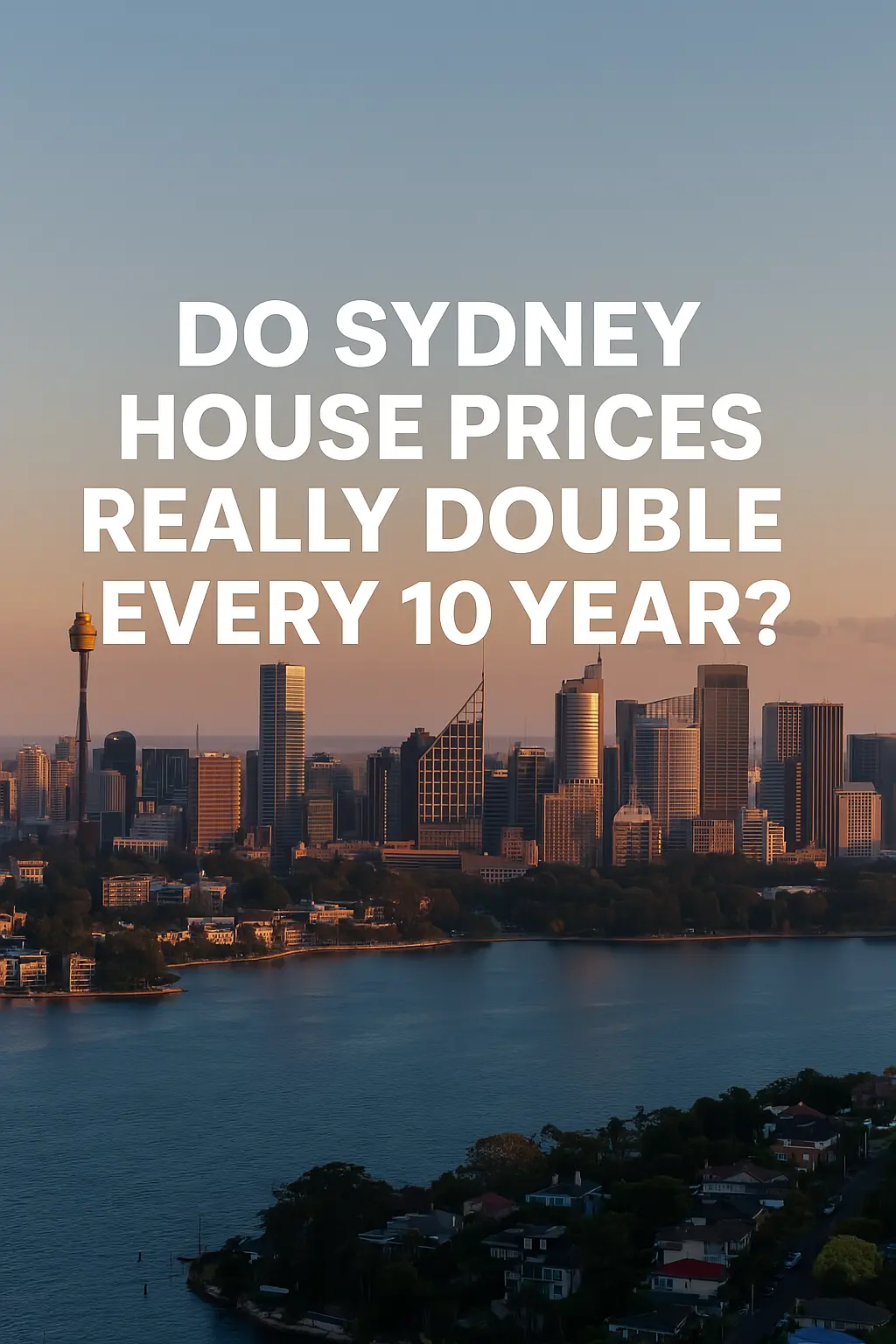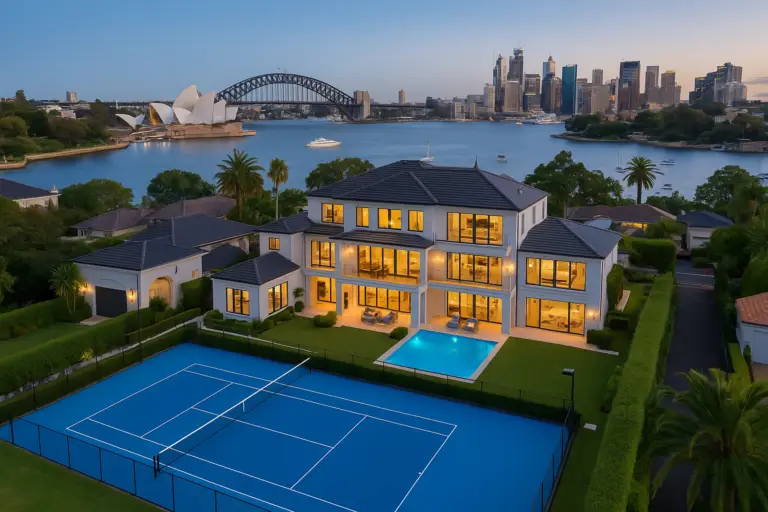There’s a common saying in real estate circles that property prices in Sydney double every 10 years. But is this actually true, or just an oversimplification? Let’s examine this theory using two contrasting suburbs: Bellevue Hill, a prestigious area in Sydney’s eastern suburbs, and Blacktown, a rapidly developing area in Sydney’s west.
Bellevue Hill: A Tale of Two Decades
2005 to 2015: Bellevue Hill’s median house price rose from approximately $3,500,000 to around $4,100,000—an increase of about 17%. This decade saw relatively moderate growth.
2015 to 2025: However, the following decade was dramatically different. Prices jumped from around $4,100,000 in 2015 to approximately $9,000,000 in 2025—a striking growth of nearly 120%. Clearly, Bellevue Hill experienced rapid price acceleration in this later decade.
Total Growth (2005-2025): Approximately 157%
Blacktown: Consistent but Slower Growth
2005 to 2015: Blacktown’s median house price increased significantly from approximately $400,000 in 2005 to about $705,000 in 2015, marking a solid growth of around 76%.
2015 to 2025: The following decade saw slower growth, from approximately $705,000 to $1,030,000—around 46%. While still positive, growth significantly decelerated compared to the previous decade.
Total Growth (2005-2025): Approximately 157%
Factors Influencing Property Price Growth
Several factors significantly impact property price growth:
Economic Conditions: Employment rates, economic stability, and consumer confidence greatly affect property values.
Interest Rates: Lower rates typically stimulate property investments, increasing demand and pushing prices upward. Conversely, rising rates tend to suppress market growth.
Government Policies: Incentives such as first-home buyer grants, stamp duty exemptions, and property taxes significantly influence demand and affordability.
Infrastructure Development: Investments in public transportation, education, and local amenities boost suburb attractiveness and consequently property values.
Global Events: Events such as the COVID-19 pandemic can drastically impact market dynamics by altering migration patterns, work-from-home arrangements, and housing preferences.
Supply and Demand Dynamics: Limited housing supply amid growing demand can accelerate property price increases.
Conclusion
The belief that Sydney property prices double every 10 years isn’t universally accurate, as illustrated by the different growth rates in Bellevue Hill and Blacktown across two distinct decades. Bellevue Hill saw rapid growth primarily in the most recent decade, while Blacktown experienced stronger growth in the previous decade.
Over the full 20-year period, both suburbs experienced similar total growth of approximately 157%. Real estate growth depends heavily on suburb characteristics, economic environments, and external influences. Therefore, each suburb and timeframe should be individually analyzed to make accurate property investment decisions.
Ready to Explore Sydney’s Property Market?
Rodney McLoughlin is a trusted real estate professional with deep insights into the Australian property market. For personalised advice and market expertise, reach out to Rodney today.
Get in touch with me directly to talk strategy, suburb trends, or your next purchase. Let’s make your next move a smart one.
Real Estate Newsletter
This article is a curated summary of various news stories from the past week, offering insights and updates on the real estate market 11 April 2025.




